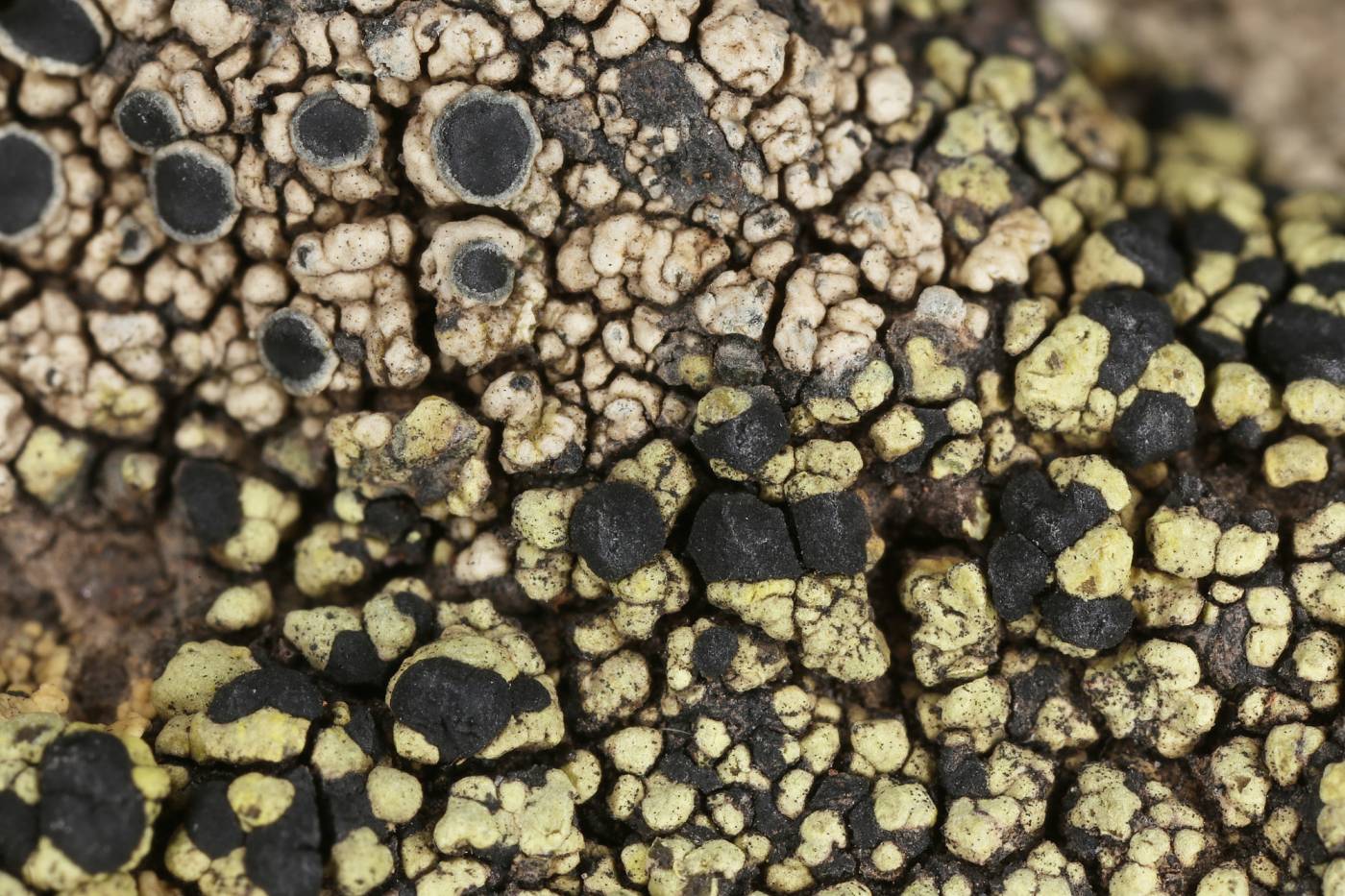Rhizocarpon viridiatrum forms small (up to 2 cm) thalli on an inconspicuous prothallus. The pale yellow-green areoles are convex and often tightly packed. The old central part of the thallus sometimes disintegrates. The black convex apothecia without a proper margin might rise above the thallus.
It starts its life cycle as a parasite of other crustose lichens, mainly on Circinaria caesiocinerea. Older thalli are independent. The species grows on relatively warm, well-lit, acidic to basic silicates or volcanics. It has also been recorded on ultrabasic serpentinites or roof tiles. It is almost cosmopolitan. In Europe, R. viridiatrum is the most common in the area between the Mediterranean Sea and south Scandinavia. The further north it occurs, the lower elevations it prefers. In the Czech Republic, it is scattered from lower to middle elevations, mostly in rocky river valleys. Literature: Černohorský Z. (1966): Die Verbreitung der Flechte Rhizocarpon viridiatrum (Wulf.) Körb. in der Tschechoslowakei. – Preslia 38: 391–402.
taxonomic classification:Ascomycota → Lecanoromycetes → Rhizocarpales → Rhizocarpaceae → Rhizocarpon
Red List (Liška & Palice 2010):VU – vulnerable
Red List (Malíček 2023):C3 – endangered
Occurrence in the Czech Republic
All records: 73, confirmed 71. One click on a selected square displays particular record(s), including their source(s).

